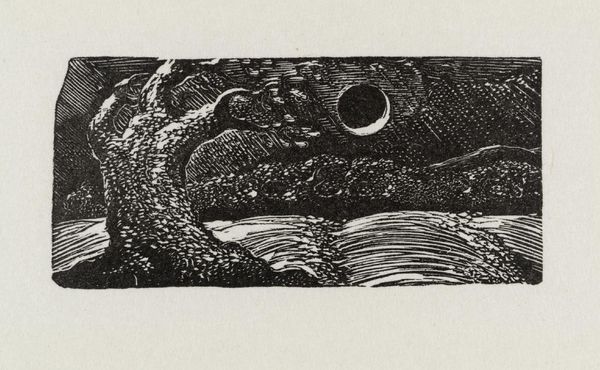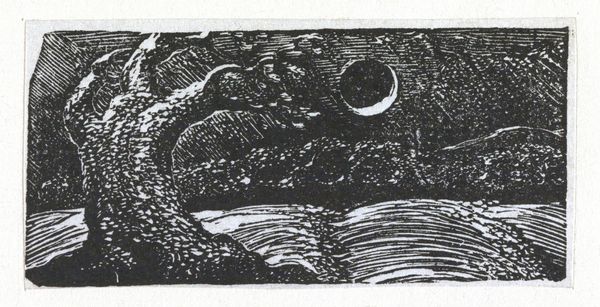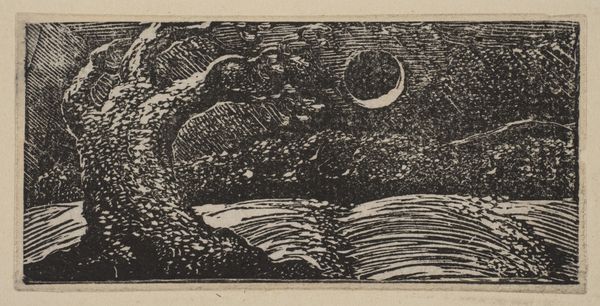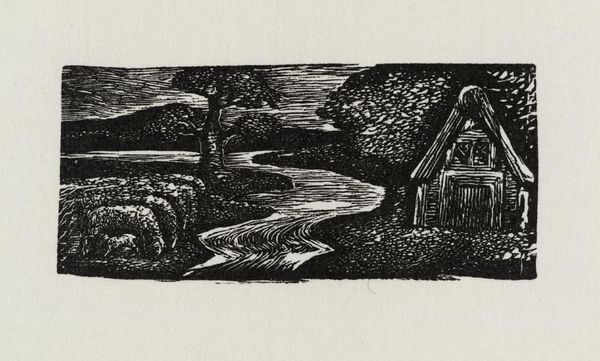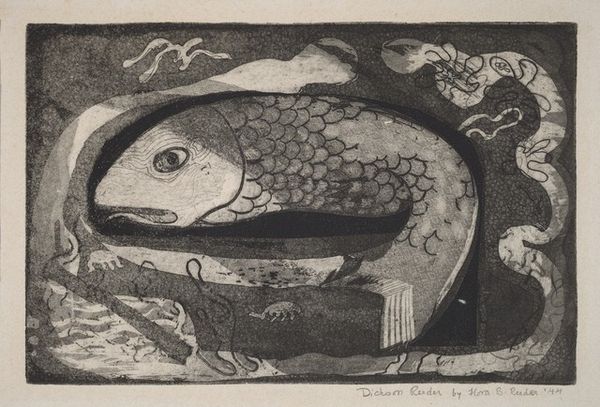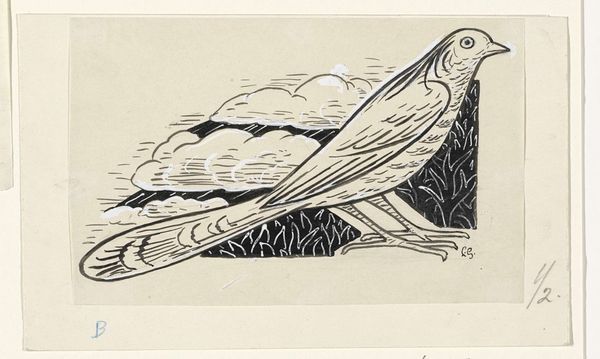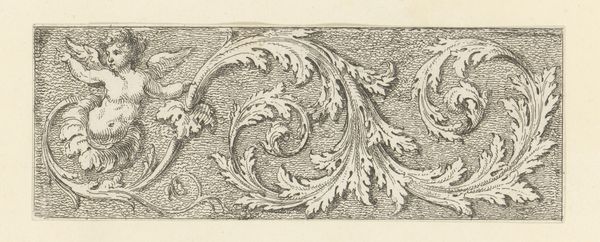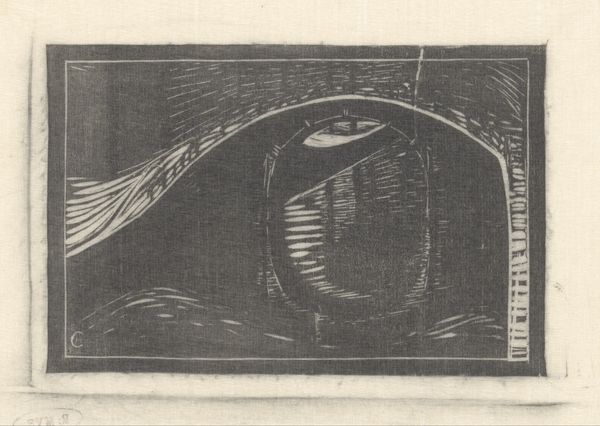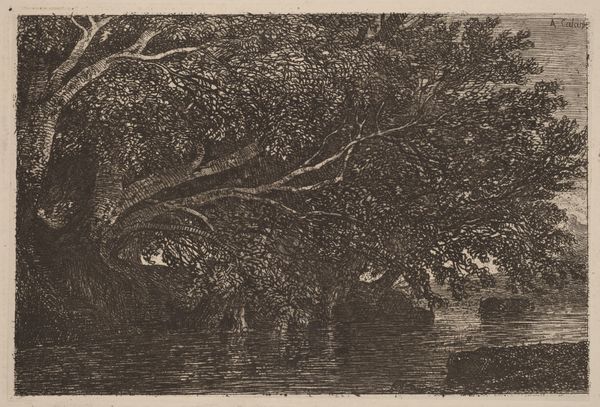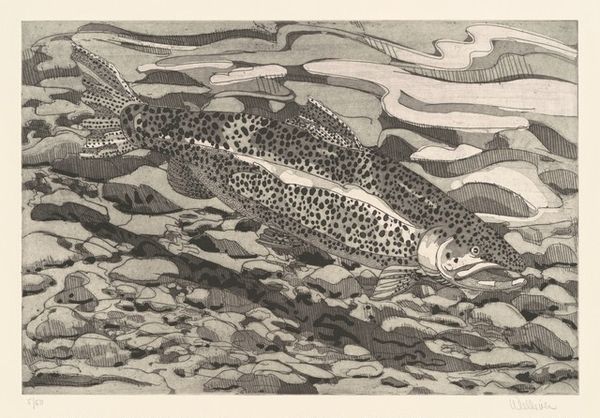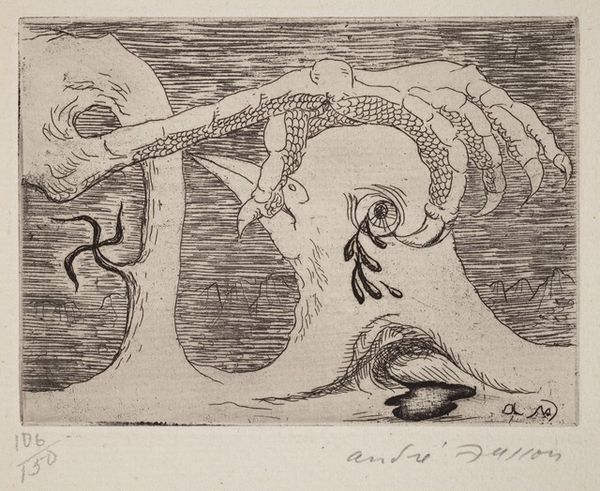
Dimensions: image: 34 x 73 mm
Copyright: NaN
Curator: William Blake, a visionary artist and poet born in the late 18th century, created this intriguing wood engraving titled "The Blighted Corn." Editor: The high contrast creates such an eerie atmosphere. You can almost feel the chill of the night air. The texture of the tree is incredibly tactile, considering it's a print. Curator: Blake's process here is crucial; wood engraving allowed for finer lines and details compared to traditional woodcuts. This level of control speaks to Blake's intense vision. Editor: It looks like a miniature world, doesn't it? The scale is intimate, yet the scene feels expansive, almost apocalyptic. It begs the question, what blight is Blake referring to? Curator: That's the crux of it, isn’t it? Blake often critiqued industrialization and its impact on the natural world. This piece likely reflects those anxieties. Editor: Well, by focusing on the material process of printmaking, we can also see how Blake democratized art-making. His engravings made his work accessible to a wider audience. Curator: Precisely, and that accessibility was vital for disseminating his radical ideas. Editor: The texture alone invites contemplation on how art shapes perspectives. Curator: Indeed, a small piece with vast implications.
Comments
tate 6 months ago
⋮
http://www.tate.org.uk/art/artworks/blake-the-blighted-corn-t02120
Join the conversation
Join millions of artists and users on Artera today and experience the ultimate creative platform.
tate 6 months ago
⋮
Virgil’s First Eclogue is about farmers who had been dispossessed as a result of the civil war in Italy after Julius Caesar seized power in 49BC. Thenot (Tityrus) has retained his farm. Meliboeus (Colinet) has lost his. Thenot agrees that Colinet was born in a ‘hapless…time’. The illustration of Blighted Corn echoes Virgil’s description of the state of chaos in the land. In his hymn Jerusalem Blake sings for those dispossessed of their ‘own Imaginations’ as he describes them in the Preface to Milton. Gallery label, December 2004
